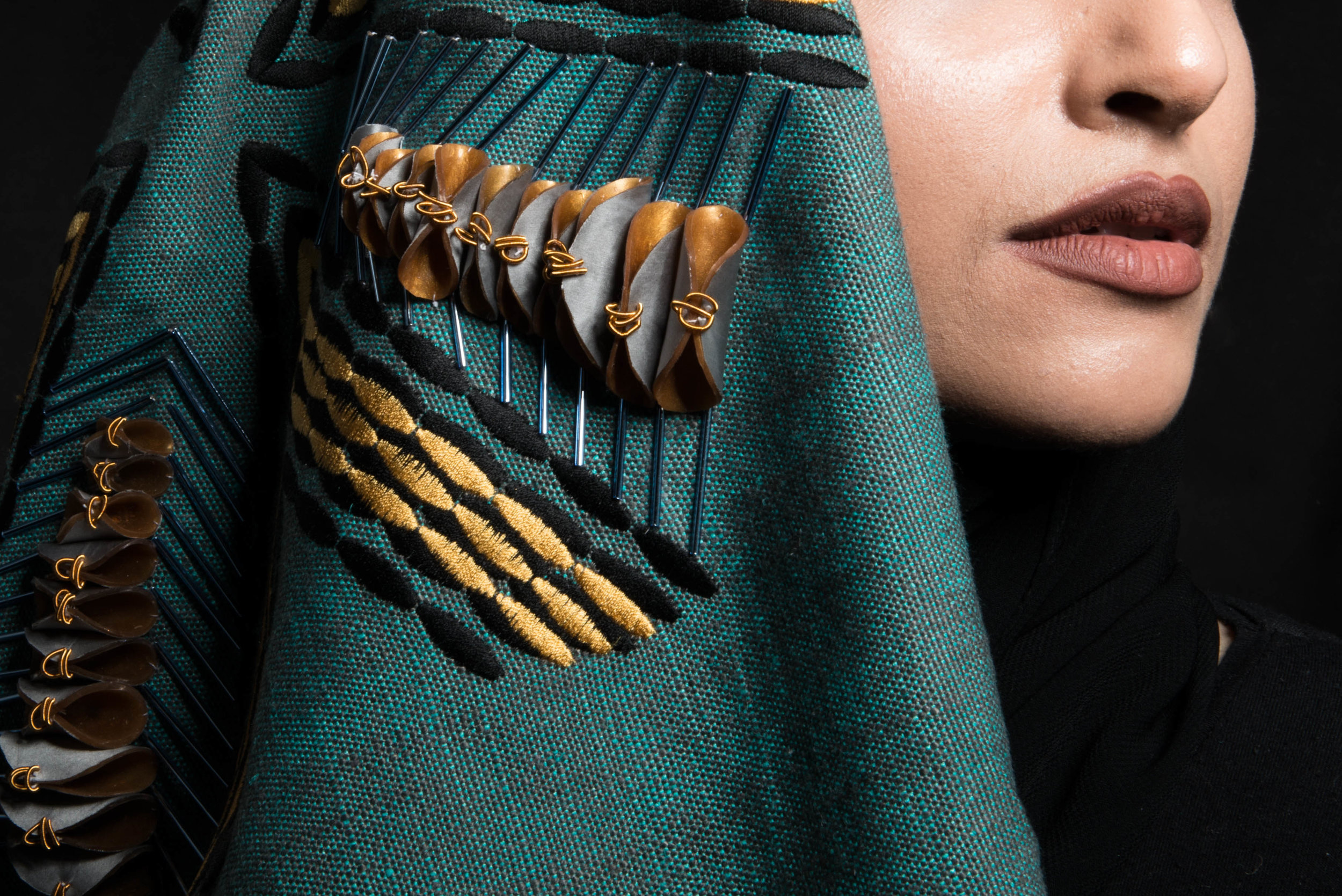SUNNA YASSIN: "I always want my work to represent positivity in Islam and encourage people to be proud of where they came from."
This week, the Banat Collective is interviewing Sunna Yassin, a young designer with a degree in Textile with Surface Design at the University of Huddersfield. Sunna hails from the United Kingdom and is revolutionizing the modest fashion industry through the incorporation of Arabic and Islamic patterns in her work.
With her interest in embroidery and textile design, Sunna has created a myriad of different pieces using unconventional techniques and materials infused with abstracted or simplified Islamic patterns, giving a contemporary take on a culturally important subject matter while also providing a youthful flare.
We’ve chatted with Sunna about her work, her religious inspiration and the marriage of the contemporary and the ancient through her art.
What is the aim of your textile project?
As there is so much negativity in the media about Islam recently, I wanted to produce a collection that shows positivity in Islam by blending traditional textiles techniques from the Middle East with contemporary processes used today to produce a modern take on Islamic patterns. I also wanted to provide fresh ideas on how embroidery is being used in the modest fashion industry.
What do you feel is the current atmosphere surrounding the topic of the hijab?
I feel that the hijab is now becoming a more mainstream which, I think, is a positive step forward. When I was growing up, there weren’t as many people in the fashion industry that I could relate to due to the lack of diversity. Now, major brands are becoming more inclusive by using hijabi models, showing that it is becoming more acceptable to wear the hijab in Western societies.
How are you bridging the gap between the traditional and the contemporary in Islamic Art?
I feel that I am bridging the gap by using materials that aren't commonly used in Islamic art. In fact, I often feel that embroidery, as well as textiles, isn’t as well known within the Islamic fashion or art scene, due to the stigma of textiles being associated with the elderly. I wanted to subvert this idea by showing that there is a vast history in the Islamic craftsmanship of textiles, and that Islamic art itself shouldn’t be relegated to one medium of work.
What are the type of materials you are using? Could you explain your process?
I utilize unusual materials such as acrylic, latex and resin to produce one-of-a-kind sequins. I combine this with traditional embroidery techniques, like gold work and silk shading, to produce a unique design. In terms of process, I combine both digital and handmade techniques to develop the way embroidery is being used. In my practice, I used a laser cutter as well as digital embroidery to create the finished product.
Do you stitch everything by hand? I can imagine it’s a very meditative process that requires a lot of patience.
Yes, I do stitch most of my work by hand and I do use hand embroidery as a way of meditation and escapism from the harsh political and social climate of the work. As today’s society is moving rapidly, this process has made me learn more about patience and how to integrate it into my life.
Is there any meaning behind the patterns you are using?
In this collection, I focused on the shapes that build the intricate patterns on Mosques. Each shape used represents something within the Islamic diaspora. The circle denotes unity, square for foundation and triangles symbolizing femininity. There is so much history behind Islam that I wanted to find out the meaning of the shapes that I drew and what they represented in my religion. I always want my work to represent positivity in Islam and encourage people to be proud of where they came from.
How would you define Islamic Art?
I define Islamic art as one of the most beautiful and intricate genres in the world that uses symbolism to express love towards Islam. There is so much history in it and it has impacted the world through its influences linking to Islam and its culture. The blend of simplicity and extravagance through geometry really appealed to me as there are so many artists using this theme in a fresh and contemporary way which is exciting. I want to expand on this idea of the simplicity of geometry by using different mediums of textiles within my practice.
Who are the artists or fashion designers we should be looking at who are representing contemporary Islam in their practice?
One artist that features Islamic contemporary art in their practice is Siddiqa Jumma. She uses vibrant colors and modern painting techniques while keeping true to the traditional aspects of Islamic art in order to represent diversity within the religion. I believe she gives fresh insight into how Islamic art pushes boundaries in today’s society.
follow & support Sunna:
instagram: @sunnayasin_embroidery
website: http://sunna21.wixsite.com/sunnayasinembroidery



